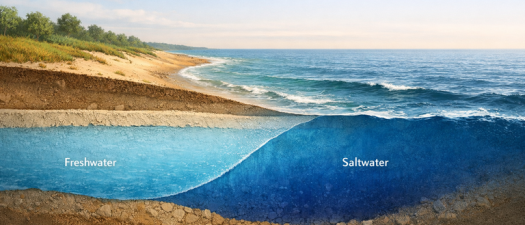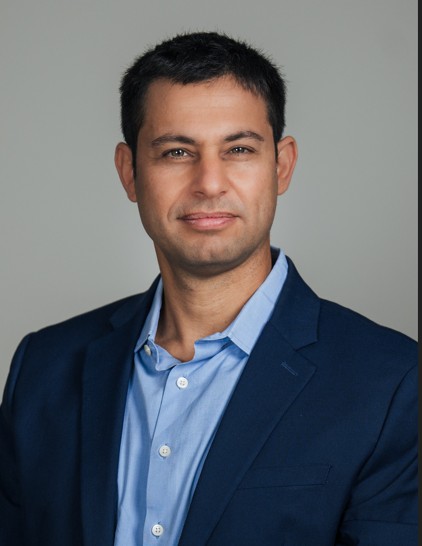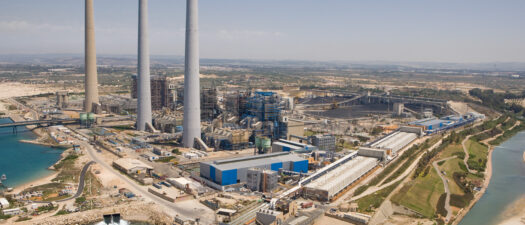Water scarcity stands as one of the defining global challenges of the 21st century, yet a more pervasive threat is unfolding beneath the surface along America’s coastlines. As freshwater.
Public Meets Private: A Collaborative Path to Sustainable Water

Water is the lifeline of a community. It powers industry, sustains agriculture, and supports our daily life. However, ensuring our water infrastructure remains strong and future-ready is no simple task. Technological challenges, limited resources, and mounting climate pressures often make it difficult for governmental agencies to manage these challenges on their own.
The solution lies with the Collaborative Model. By combining the strengths of the public and private sectors, this approach offers a smarter way to design, finance, and deliver major water projects. It’s not just about splitting costs, it’s about sparking innovation, building trust, and ensuring communities continue to have reliable access to safe, affordable water for decades to come.
How the Collaborative Model Works
When public agencies and private partners collaborate, they can pool all available means of financing resources, local and technological expertise, operational know-how, and long-term experience to move large-scale projects forward.
The Collaborative Model offers blended funding, based on available resources. So both sides share the investment and the risk, as true partners with a unified goal of affordable, resilient high quality water. The private partners also bring the talent, leadership, and technical skills needed to manage the complex design, construction, and operations, with the right allocation of risk.
Importantly, the public sector retains control and ownership of the plant. Instead, they repay costs over time through agreed terms, while ownership and oversight can be flexibly structured to meet the public partner’s needs. Risks and responsibilities are distributed to the party best equipped to manage them, creating a balanced partnership.
The Collaborative Model has been used worldwide to deliver complex infrastructure projects and has won the confidence of governments, lenders, and communities alike. Still, like any strategy, it comes with challenges.
Common Challenges (and How to Overcome Them)
1. Public Approval
Infrastructure projects can disrupt daily life or raise costs for residents, which sometimes fuels resistance. The best antidote is transparency. Leaders should clearly communicate the project’s purpose, whether it’s replacing aging assets or meeting new regulations, and explain how risks and rewards will be shared. When the public sees the rationale and the benefits, trust grows.
2. Project Management
Public agencies are used to managing procurement, but massive infrastructure projects, with specific advanced technologies, demand resources that many do not have in-house. Developing bids, evaluating proposals, and handling execution can overwhelm already stretched teams.
Here’s where collaboration helps: the private sector can shoulder much of the groundwork, from feasibility studies and permitting to financial modeling and legal frameworks. By transferring these early-stage tasks, governments can focus on outcomes while reducing risk. This shift not only lightens the load but also speeds up delivery.
3. Asset Control
A common worry is losing control over public assets. But the Collaborative Model is not about privatization, it’s about partnership.
The public sector retains ownership and the ability to step in if the private partner underperforms. Contracts can be structured to ensure oversight of operations, workforce, and quality standards. Financing can also be designed so that ownership remains firmly public while still sharing risks and responsibilities.
With the right framework, control stays where it should, while the private sector delivers efficiency and expertise.
IDE – Collaboration in Action
When done well, the Collaborative Model is more than just a financing tool. It’s a pathway to accelerate economic growth, strengthen communities, and deliver ambitious water projects that might otherwise never get off the ground. For governments weighing projects that seem too complex or resource-heavy, collaboration can turn “impossible” into achievable.
At IDE, collaboration is central to how we help communities secure sustainable water. With decades of global experience in desalination, reuse, and industrial water treatment, we combine advanced technologies with flexible partnership models that balance cost, risk, and long-term performance. Importantly, our role often extends beyond design and operations to include the financial backbone of a project. By working closely not only with leading international lenders, but also with industry players and strategic partners who share an interest in advancing water infrastructure or securing water for their own operations, we help municipalities secure favorable financing conditions and reduce overall lifecycle costs. This collaborative model enables public agencies to focus on service and oversight, while IDE brings the technical expertise, operational know-how, and financial relationships needed to move projects forward with confidence. The result is a true partnership that safeguards water reliability today and builds resilience for decades to come.
We’ve already seen this approach succeed in practice. In Fort Lauderdale, Florida, the city partnered with private-sector experts to launch the Prospect Lake Clean Water Center, a $485 million project that will provide 50 million gallons of safe drinking water every day. Under the Collaborative Model, the city retains ownership and oversight, while private partners take on construction risks and long-term operations. Recognized as the Best P3 Utility Project of the Year in 2023, it demonstrates how shared responsibility and innovation can deliver not only resilient infrastructure but also public trust and long-term value.
Because when the public and private sectors work together, the outcome isn’t just infrastructure, it’s resilience, innovation, and sustainable water for the future.
Contact a water expert today and find out more about how IDE can help you solve your water challenges.
















